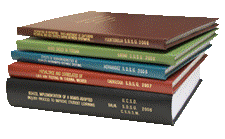Libraries, University of Nebraska-Lincoln

Archival Master’s Theses from the University of Nebraska-Lincoln
Date of this Version
5-1961
Document Type
Thesis
Citation
Thesis (M.S.)—University of Nebraska—Lincoln, 1961. Department of Agricultural Economics.
Abstract
The purpose of this study is to determine an efficient distribution of wheat in the United States. Approximately 85% or 900 million bushels per year of the total amount produced annually in the years 1953 through 1957 were consumed as food. The Northern Great Plains States with less than five per cent of the entire population of the nation produce approximately half of this amount. This, and the fact that the major markets are in the East and the West far from the dominant supply regions, indicates the needs for and the importance of transportation.
The specific objectives of this study are:
-
To review production and consumption statistics with regard to determining wheat surplus and deficit regions in the United States.
-
To illustrate the application of linear programing to an agricultural transportation problem.
-
To ascertain the most efficient distribution for wheat in the United States under a given set of rates.
-
To compare the existing patterns of movement to the model results.
-
To indicate optimum allocation given variations in the factors considered in the model.
The United States was divided into fifteen regions according to similar production and consumption characteristics. These regions are connected by a transportation network, the costs of which are assumed to be independent of the volume handled.
It has been assumed that each region has a virtually inelastic demand for wheat. This assumption considers demand based on population size and average per capita consumption in each region Differences in regional income distribution or disposable income have not been considered.
Production and consumption statistics were used to indicate which regions were surplus or deficit areas. In order to solve the problem of the need for a homogeneous product, it was assumed that the mills were located along the direct line of transportation between production and consumption centers.
Throughout the analysis emphasis has been placed in particular on the problems and conditions in the Great Plains States.
This study has been largely of a systematic nature. It is always dangerous to make final decisions on alterations of an existing pattern when a study is based on certain assumptions, and therefore does not completely picture the actual situations. Incompleteness due to lack of data or details will often occur, but even with these facts in mind, this study has made it possible to demonstrate that wheat and flour do not move in an optimal way, and that a shift of the applied transportation routes in the direction of the optimal models will create a lower transportation bill.
Advisor: Clarence J. Miller


Comments
Copyright 1961, the author. Used by permission.